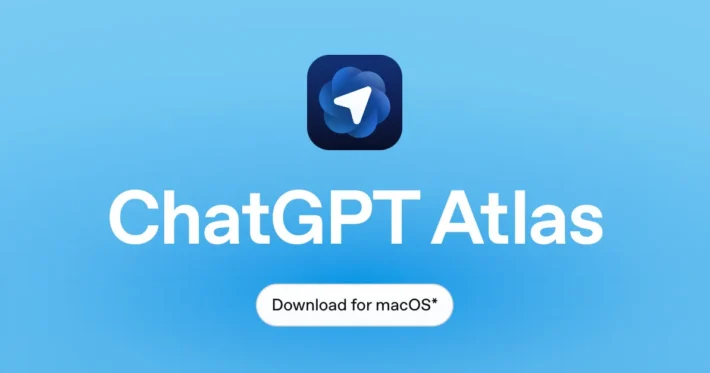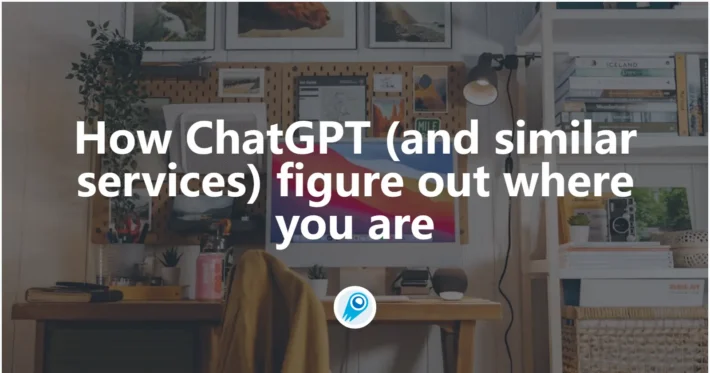How to Scroll Down on ChatGPT? All You Need to Know

ChatGPT’s conversational interface sometimes behaves in unexpected ways—particularly when it comes to scrolling through long exchanges. As users push the limits of token windows and engage in deeper, more complex dialogues, the need for reliable navigation becomes paramount. Below, we explore the root causes of scrolling issues, practical workarounds, recent official enhancements from OpenAI, and best practices to ensure a smooth ChatGPT experience.
Why can’t I scroll down effortlessly on ChatGPT?
Several underlying factors can impede vertical navigation in ChatGPT’s web and desktop interfaces:
Browser compatibility and outdated versions
Modern web applications rely on up-to-date browser engines for smooth rendering and interaction. Outdated versions of Chrome, Firefox, Edge, or Safari may struggle with the dynamic JavaScript and CSS that ChatGPT employs, causing freezes or unresponsive scrollbars. In fact, many support threads highlight that simply updating or reinstalling your browser often resolves the issue immediately .
UX design and infinite-scroll behavior
In June 2025, OpenAI rolled out a revamped sidebar featuring an “infinite scroll flyout” for conversation history—offering unlimited scrolling through past chats. While this addresses navigation among conversations, the core chat window still relies on a standard scroll container. Misalignments between these two patterns can confuse users who expect the same fluidity within each conversation.
Token limits and output truncation
As of May 2025, ChatGPT’s individual responses are capped at roughly 4,000 tokens (approximately 300 lines) per message. When an answer approaches this threshold, the model may truncate mid-response, leaving the scroll bar at its maximum position with no further content to display—even if there’s more to come. This silent cutoff can feel like a scrolling failure when it’s actually a token-limit guardrail.
How can you enable smooth scrolling on ChatGPT?
Depending on your platform and technical comfort level, there are multiple strategies to restore or enhance scrolling functionality:
Updating your browser and desktop app
- Web browsers: Navigate to your browser’s menu → Help/About, and install any available updates. For Chrome, go to Help → About Google Chrome; for Edge, Help and feedback → About Microsoft Edge; for Firefox, Settings → General → Firefox Updates.
- ChatGPT Desktop App: If you use the macOS or Windows app, check for updates via the system menu. Improved scrolling performance was officially shipped in the macOS client—users report noticeably smoother navigation after upgrading.
Leveraging the “Share Link” feature
OpenAI’s conversation sharing tool not only lets you export dialogues but also re-renders the chat in a fresh context. Community members have discovered that copying the share link and opening it in a new tab or incognito window often restores full scrollability, bypassing in-session glitches .
Tweaking the CSS “overflow” property
For power users comfortable with browser developer tools:
- Right-click within the chat window and select Inspect.
- Locate elements tagged with
overflow-hidden. - Change their
overflowstyle fromhiddentoauto. - Close the dev tools—vertical scrollbars should reappear, enabling you to navigate the entire response.
Installing specialized browser extensions
Several Chrome and Firefox add-ons are designed to improve ChatGPT keyboard navigation and scrolling:
- ChatGPT Custom Shortcuts Pro: Assign bespoke PageUp/PageDown bindings and jump-to-top/bottom commands.
- OverflowY Enhancer: Forces consistent vertical scroll zones in dynamic web apps.
After installation, refresh ChatGPT and configure your desired shortcuts for instant scroll control .
Using a JavaScript bookmarklet (mobile-friendly)
Mobile browsers often restrict direct CSS edits, but you can deploy a bookmarklet to dynamically adjust scroll settings:
javascript:(function(){
document.querySelectorAll('html *').forEach(node => {
if (getComputedStyle(node).overflow === 'hidden') {
node.style.overflow = 'auto';
}
});
})();
Save this as a bookmark with the above code in the URL field. Tapping it while on ChatGPT forces all hidden-overflow elements to become scrollable .
Employing keyboard navigation shortcuts
For a quick, extension-free workaround, try pressing Tab + ↑ Arrow together. This highlights the “Share Chat” button and often reactivates the page’s scroll functionality without further steps.
What official improvements has OpenAI released for scrolling?
OpenAI continues to refine ChatGPT’s usability, with notable updates in 2025:
Sidebar infinite-scroll flyout
The June 2025 sidebar redesign introduced an infinite-scroll flyout, allowing users to load older chats on demand without pagination—streamlining the discovery of past conversations.
macOS app scrolling performance boost
Simultaneously, the ChatGPT macOS application received an under-the-hood upgrade that “improved performance scrolling in conversations—by a lot,” according to official release notes. Users on Apple Silicon and Intel-based Macs alike report reduced lag and more responsive scrollbars.
What immediate workarounds can users implement?
When waiting for an official fix isn’t an option, several quick remedies can restore basic scrolling functionality.
Keyboard Shortcuts and Tab Navigation
As a first resort, users can navigate the chat pane via keyboard:
- Tab/Shift + Tab cycles focus through interactive elements (e.g., message bubbles, buttons).
- Arrow keys can then be used once focus lands on the message container.
- On some platforms, Ctrl + Up/Down or Page Up/Page Down will bypass CSS restrictions—though support varies by browser
While not as intuitive as a scrollbar, these shortcuts provide a stopgap for critical conversations.
Tampermonkey and Userscripts
A more robust solution for desktop browsers involves injecting a small userscript via Tampermonkey (Chrome/Edge) or Greasemonkey (Firefox). One widely shared script dynamically swaps the problematic overflow-hidden class on the chat container to overflow-visible, instantly restoring the scrollbar . Installation steps:
- Install Tampermonkey or Greasemonkey.
- Create a new script with the provided code (see Tech Shinobi’s walkthrough).
- Enable the script and reload ChatGPT.
This method effectively overrides UI constraints without waiting for OpenAI patches.
How can advanced users customize ChatGPT for seamless scrolling?
Beyond copy-pastable scripts, power users can tailor interactions for an optimized workflow.
Crafting Custom Userscripts
Developers familiar with JavaScript and the MutationObserver API can create more sophisticated scripts that:
- Monitor dynamic class changes.
- Reapply
overflow-visibleas new messages load. - Adjust scroll thresholds for pre-loading older messages.
Tech Shinobi’s example demonstrates how a minimal script can maintain scroll behavior even when ChatGPT’s own code alters the DOM .
Utilizing Browser Extensions Efficiently
Extensions like “Superpower ChatGPT” and “KeepChatGPT JS” offer built-in scrolling patches alongside other enhancements (e.g., automatic refresh, full-screen mode). While convenient, users should vet these plugins for security and performance trade-offs; community ratings on repositories like Greasy Fork can guide selection .
What role does browser choice play in scroll performance?
Choosing the right browser and tuning its settings can preempt many scrolling woes.
Browser Compatibility Considerations
Modern browsers implement CSS and JavaScript standards differently. Chrome’s V8 engine, for example, handles overflow recalculations more aggressively than some WebView-based browsers on mobile. Switching between Chrome, Firefox, and Edge can reveal which engine best supports ChatGPT’s scroll mechanics—often, updating to the latest stable release resolves subtle rendering bugs.
Experimental Flags and Developer Modes
For those on Chrome or Chromium-based browsers, enabling the deprecated synchronous mutation events flag (chrome://flags/#enable-sync-mutation-events) can allow older userscripts to function correctly if they rely on synchronous DOM updates. Likewise, toggling “Developer Mode” can surface console errors that pinpoint scroll-blocking exceptions.
What best practices help prevent scrolling issues?
To minimize friction and ensure smooth navigation across sessions:
- Keep everything updated: Regularly update your browser, ChatGPT desktop app, and any relevant extensions.
- Limit single-message length: For exceptionally long responses, prompt ChatGPT to “continue” in smaller increments to avoid token-limit cutoffs.
- Clear cache periodically: A cluttered cache can interfere with loading of dynamic elements; clear it via browser settings to maintain performance.
- Test in multiple environments: If you encounter scrolling issues, switch between desktop, mobile, and incognito modes to isolate browser-specific bugs.
- Report persistent bugs: Use OpenAI’s feedback channels or community forums to submit reproducible steps—this helps the team identify and squash lingering UI defects.
Getting Started
CometAPI provides a unified REST interface that aggregates hundreds of AI models—under a consistent endpoint, with built-in API-key management, usage quotas, and billing dashboards. Instead of juggling multiple vendor URLs and credentials.
While waiting, Developers can access O4-Mini API ,O3 API and GPT-4.1 API through CometAPI, the latest models listed are as of the article’s publication date. To begin, explore the model’s capabilities in the Playground and consult the API guide for detailed instructions. Before accessing, please make sure you have logged in to CometAPI and obtained the API key. CometAPI offer a price far lower than the official price to help you integrate.
Use CometAPI to access chatgpt models. You don’t have to worry about UI sliding errors.
Conclusion
Mastering scroll techniques in ChatGPT means more than just moving up and down a page; it’s about leveraging the latest interface improvements, keyboard shortcuts, and platform-specific gestures to maintain full context, boost productivity, and troubleshoot any hiccups along the way. By staying updated on feature rollouts—like the enhanced context handling and mobile UI overhaul you’ve seen this spring—you’ll ensure every conversation remains seamlessly navigable, whether you’re following intricate threads on the web, catching up on the go, or reviewing recorded transcripts on the desktop app.



